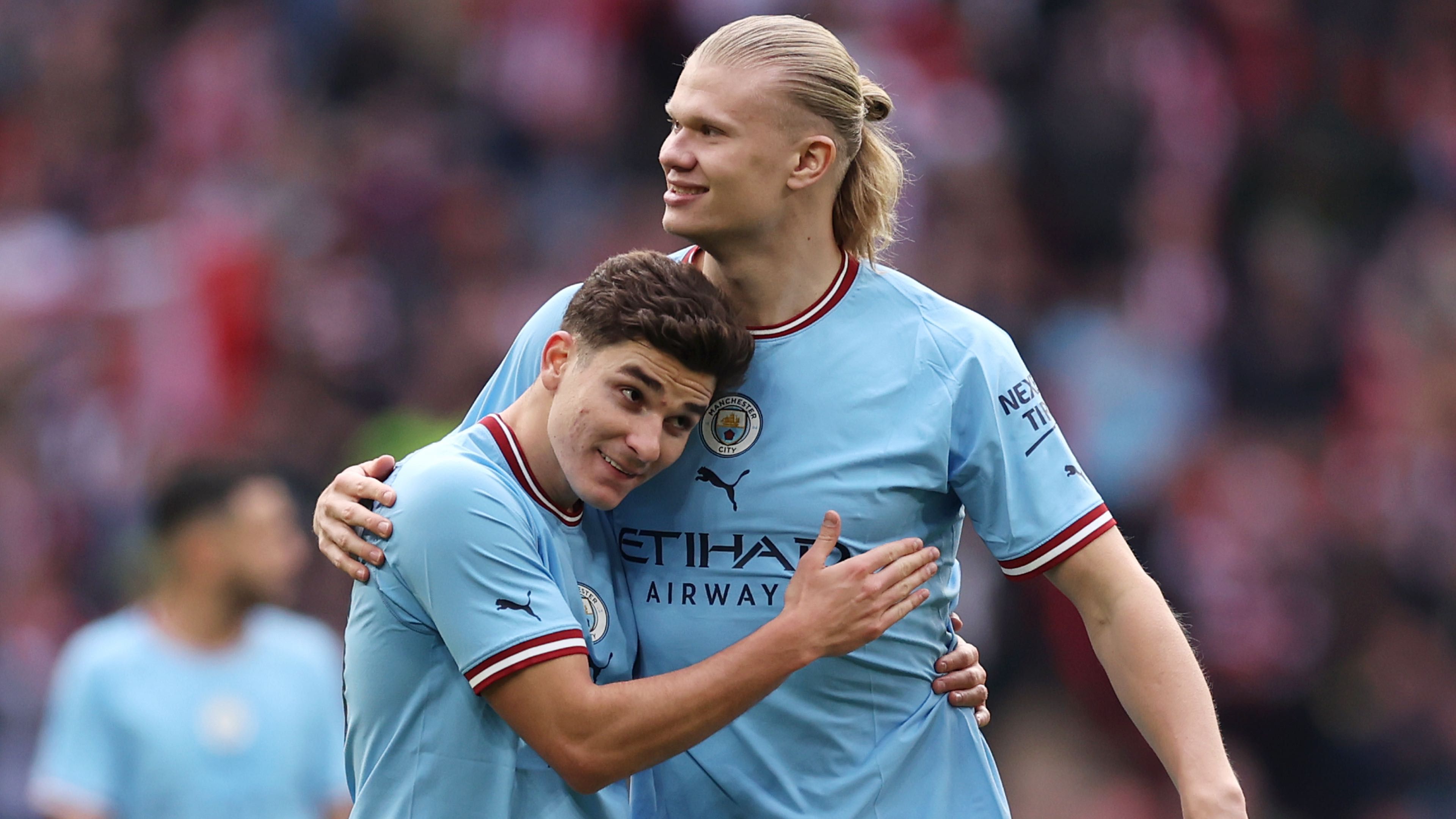Pep Guardiola’s tactical adaptation, transitioning to a 4-4-2 formation, has been a significant shift from his previous tactical approach.

Just two seasons ago, Guardiola opted to play without a recognized striker, but he has now embraced a more traditional system at Manchester City.

Last season, Guardiola even experimented with a formation that featured four center-backs in some games, converting Nathan Ake and Manuel Akanji into full-backs. This season, he has gone a step further by deploying the 4-4-2 formation, which was once seen as an indication of the outdated nature of English football.

Guardiola’s tactical innovations always involve careful planning and consideration. The primary motive behind his recent tactical scheme is relatively straightforward: accommodating his two world-class strikers, Erling Haaland and Julian Alvarez.

Alvarez’s impressive performances with the Argentina national team, including a stellar World Cup campaign where he scored four goals, put additional pressure on Guardiola to find a way to incorporate him into the City lineup.

However, Guardiola initially hesitated to start both Haaland and Alvarez together in most games. He believed that having two strikers on the pitch might adversely affect the team’s overall ability to create scoring opportunities. Guardiola explained his perspective in January, stating that while it’s possible for Haaland and Alvarez to play together, creating chances required the involvement of other types of players.

Guardiola highlighted the importance of creating scoring opportunities correctly, cautioning against having too many attacking players forward without a sound process, as it could lead to defensive vulnerabilities, especially against teams deploying a five-man defense.

Despite limited starting opportunities, Alvarez did get his chance towards the end of the league season, sometimes alongside Haaland. He showcased his abilities as a wide forward in these matches and notably scored a stunning long-range goal against Fulham, contributing to a crucial win.

Guardiola praised the effectiveness of playing both forwards together, describing it as an “incredible weapon.” Nevertheless, Guardiola continued to use this tactic sparingly. Alvarez had 31 Premier League appearances during the season but started in only 13 of them. Of those starts, he played alongside Haaland in just eight games.

Alvarez did not feature in any of City’s Champions League knockout matches, the final against Inter, or the FA Cup final against Manchester United. Despite his limited playing time, he managed to score 17 goals in all competitions and added three more trophies to his collection, including a World Cup winners’ medal—a remarkable first season indeed.
